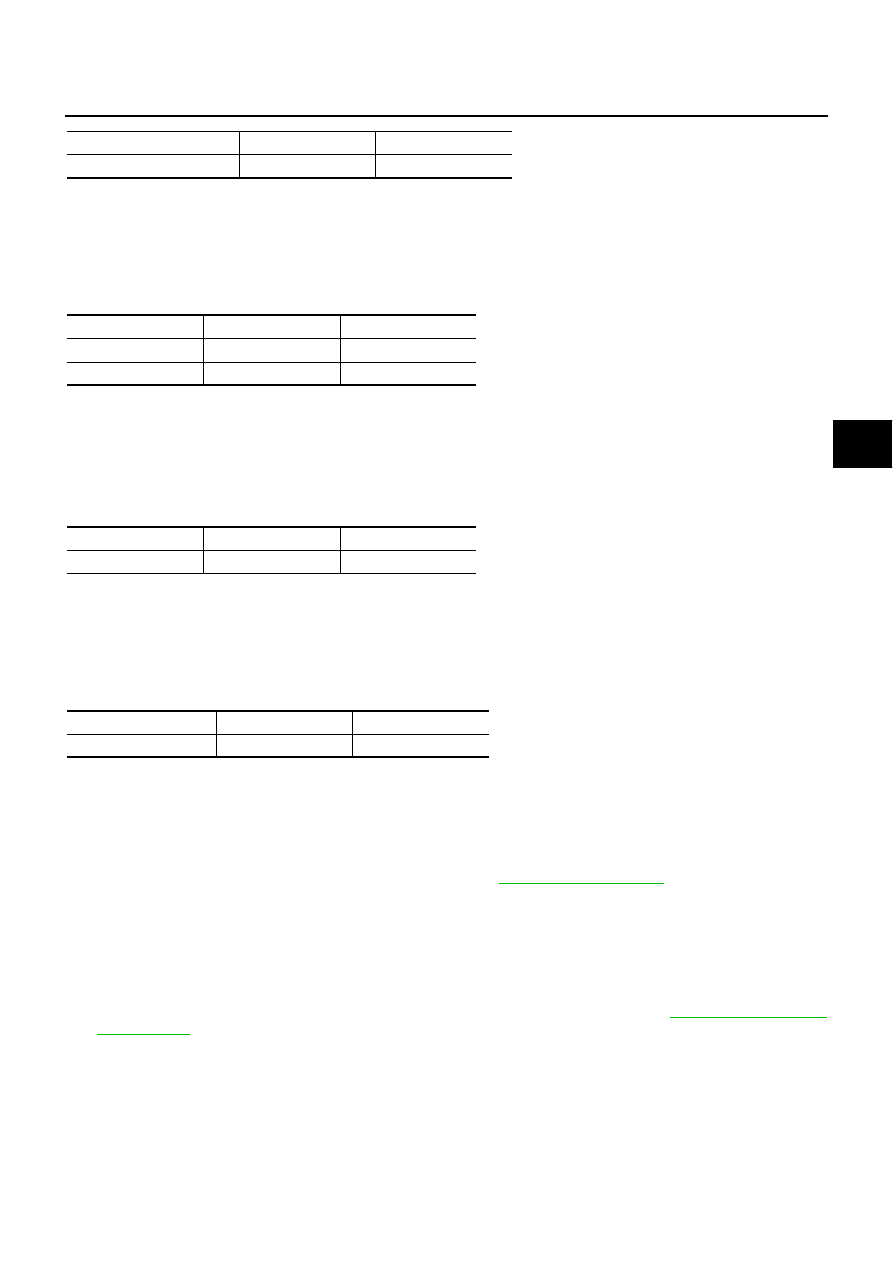содержание .. 140 141 142 143 ..
Nissan Primera P12. Manual - part 142

TROUBLE DIAGNOSIS
BRC-73
[ESP/TCS/ABS]
C
D
E
G
H
I
J
K
L
M
A
B
BRC
NOTE:
During the active test when “OFF” on the “VDC WARNING LAMP” screen is touched, all of the ESP OFF indi-
cator lamp, SLIP indicator lamp, and ABS warning lamp flash once. This is not abnormal.
Motor Relay and Actuator Relay
Touch “ON” and “OFF” on the “ABS MOTOR” screen to check that the motor relay and the actuator relay oper-
ate as follows.
NOTE:
●
If the active test is performed with the brake pedal depressed, the pedal stroke may be changed. This is a
normal condition.
●
“TEST STOP” is displayed after 10 seconds from the operation start.
SLIP Indicator Lamp
Touch “ON” and “OFF” on the “SLIP LAMP” screen to check that the SLIP indicator lamp operates as follows.
NOTE:
During the active test when “OFF” on the “SLIP LAMP” screen is touched, all of the ESP OFF indicator lamp,
SLIP indicator lamp, and ABS warning lamp flash once. This is not abnormal.
ABS Warning Lamp
Touch “ON” and “OFF” on the “ABS WARNING LAMP” screen to check that the ABS warning lamp operates
as follows.
NOTE:
During the active test when “OFF” on the “ABS WARNING LAMP” screen is touched, all of the ESP OFF indi-
cator lamp, SLIP indicator lamp, and ABS warning lamp flash once. This is not abnormal.
For Correct and Quick Diagnosis
EFS002X5
PRECAUTIONS FOR TROUBLE DIAGNOSIS
●
Before performing the trouble diagnosis, always read the
to confirm the general
precautions.
●
After replacement of ESP/TCS/ABS control unit, steering angle sensor, steering parts, suspension parts,
or tires, and adjustment of alignment, always adjust the neutral position of steering angle sensor before
driving.
●
When the ESP/TCS/ABS control unit is replaced, check that the label on the computer unit is identical
color.
●
After completing the trouble diagnosis, always erase the malfunctioning memory.
●
When inspection of the continuity or voltage between units is performed, check the connector terminals for
disconnection, looseness, bend, or collapse. If any malfunction is detected, repair or replace the applica-
ble part.
●
Intermittent problems may be caused by a malfunction on harness, connector, or terminal. Move the har-
nesses, harness connectors, or terminals by hand to make sure that there is no contact malfunction.
●
If a circuit tester is used for the check, be careful not to forcibly extend any connector terminal.
Operation
ON
OFF
VDC WARNING LAMP
ON (Lamp ON)
OFF (Lamp OFF)
Operation
ON
OFF
MOTOR RELAY
ON
OFF
ACTUATOR RELAY
ON
ON
Operation
ON
OFF
SLIP LAMP
ON (Lamp ON)
OFF (Lamp OFF)
Operation
ON
OFF
ABS WARNING LAMP
ON (Lamp ON)
OFF (Lamp OFF)